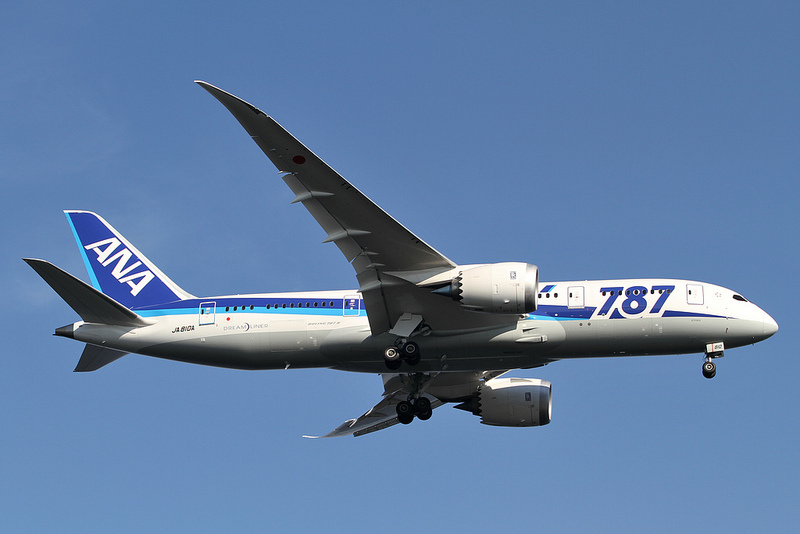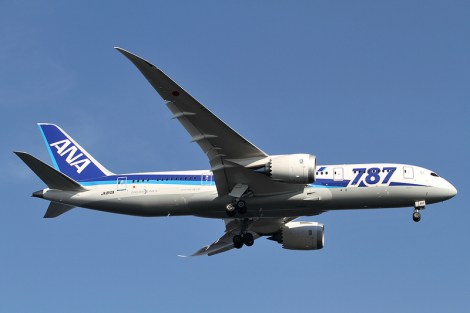Boeing’s 787 Dreamliner™©® was meant to be the company’s cap-featherer, a “super-efficient airplane” that hauls hundreds of people for thousands of miles using 20 percent less fuel than older planes of the same size. The company touted its solar-powered factory that produced zero waste, promising to recycle planes once they’d been retired. The plane’s fuselage even eliminates the use of over 40,000 rivets, reducing waste and resource use.
Sometimes, Dreamliners©™ don’t come true. After five incidents in the past two weeks, Europe, Japan, and the United States have grounded all fifty 787s currently in use. While one flight reported problems with its brakes and another had a leaky fuel valve, the problems have centered around the planes’ lithium-ion batteries. Wired explains the importance of those batteries — including how they make the planes less fuel-intensive:
The 787 was first announced ten years ago this month, and has cost Boeing more than $30 billion to develop according to the Seattle Times. Much of that cost lies in the many innovative new technologies the company used to create the most fuel efficient airliner flying today.
Hailed as the airliner of the future, the 787 is mostly built from composite materials and uses an unprecedented amount of electricity to power many of the systems on board the airplane. The Dreamliner is often referred to as the first composite airliner, but it could just as easily called the most electric airliner ever. …
Most of the electricity on the Dreamliner is created by six generators, two on each engine and two on the auxiliary power unit in the tail of the airplane. Traditionally, Boeing airliners used only three. These generators provide electricity for the airplane in a similar way that an alternator provides electricity for your car. Though on the 787, a lot more electricity is generated than in the family truckster.The Dreamliner’s electrical system generates nearly 1.5 megawatts, enough to power several hundred homes. With such high electric power demands, the 787 needs high power-dense batteries as an emergency backup source. …
Boeing estimates using electrical systems instead of [pneumatic systems] decreases the fuel burn about three percent. Overall, the 787 reduces the fuel burn about 20 percent compared to a similar size aircraft.
In theory, this makes sense. The problem arises when, in practice, the batteries end up looking like this.
That’s from the National Transportation Safety Board, which is investigating a battery fire that grounded a 787 Dreamliner™™™™ in Boston. Earlier today, Businessweek looked at some of the reasons the batteries might be catching fire; an investigator in Japan suggested that voltage levels were set improperly.
It will likely be weeks before the cause of the fires is determined — meaning it will be months before 787s start flying again if there’s something that needs to be fixed. Not the rollout that Boeing anticipated, but one that provides an important lesson: If you want to introduce an electricity-dependent, fuel-sipping plane, make sure that the electrical components don’t catch fire and the fuel system doesn’t spring any leaks.
You will note that we at no point made a nightmare joke; you are welcome.





